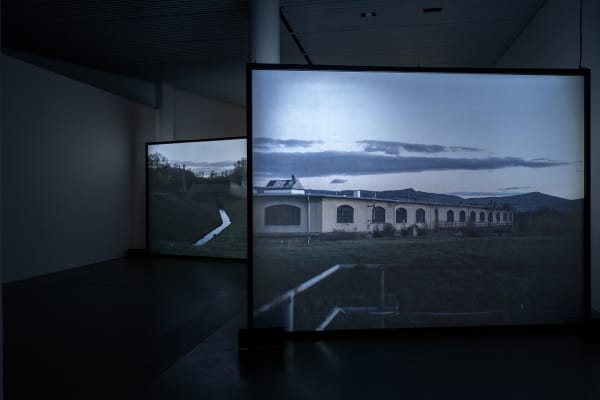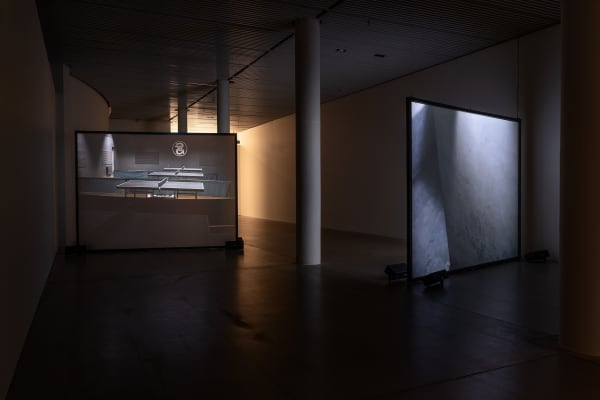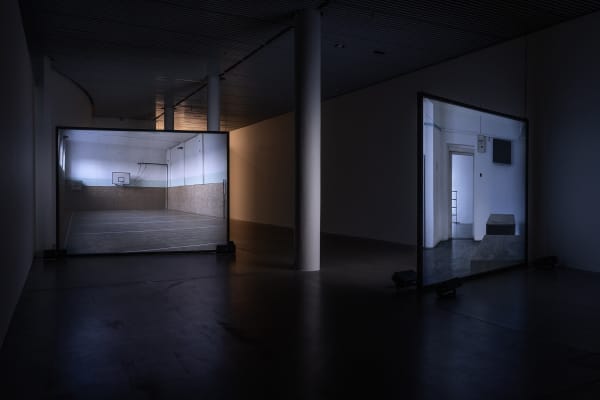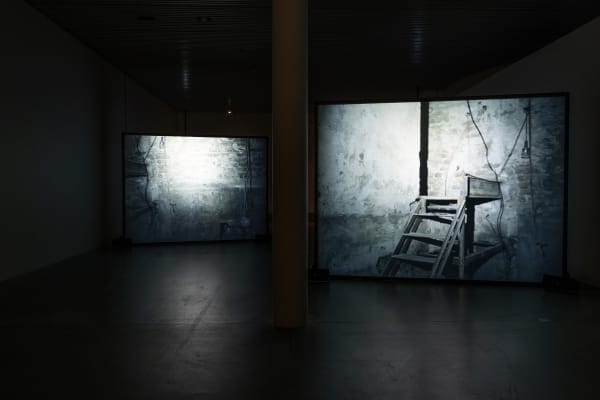"The reason why I use sound is because it defines space and triggers memory. My intent is to adopt its psychological effect to make people aware of the place they’re in.” — Susan Philipsz
Susan Philipsz trained in sculpture in Scotland and Northern Ireland. She represents a re-engagement with the attitudes and ideas formed in the 1970s based on concepts of ephemerality. She has expanded the field of sound sculptural work by intersecting it with space and place to produce sculptural, architectural, social happenings that live in the ephemerality of chance sound encounters.
In Study for Strings Sokol Terezín by Susan Philipsz, viewers are presented with a major new sound and video installation consisting of two isolated instruments—a cello and a viola—which are accompanied by two screens showing subtle footage of the hallways at the Theresienstadt concentration camp as they appear today.
The focal point of the piece is the sound of the two string instruments, which are originally part of the composition Study for String Orchestra, written by Czech-Jewish composer Pavel Haas (1899-1944). The piece was used as soundtrack for the Nazi propaganda film Theresienstadt: Ein Dokumentarfilm aus dem jüdischen Siedlungsgebiet from 1944, which was made with the purpose of presenting the German concentration camps as something completely different from the inhumane work and extermination camps they actually were. Haas was forced to compose the piece while imprisoned at Theresienstadt before being transferred to Auschwitz, where he, along with most other prisoners from Theresienstadt, was murdered.
Susan Philipsz brings the story of Pavel Haas and millions of other tragic personal stories into her artwork, utilizing sound fragments and video installations to place the horrors of the past in a contemporary context. In the ARoS exhibition, a camera moves through the buildings where Haas was imprisoned, as if the viewer was moving through the hallways as a ghost haunting the place where it once lived. At the same time, the sounds of the isolated instruments—the cello and the viola—fill the artwork, which gives the viewer a feeling of being both physically present in the room, while being mentally surrounded by memories, recollections, and thoughts. With this artwork, Philipsz explores themes such as distance and separation, absence and loss, as well as the importance of past events as we view history through our present perspective.
The sound establishes the framework for Susan Philipsz’ artworks. Throughout her career, Philipsz has deployed the ability of sound to define time and space, which she also does in the ARoS exhibition, actively affecting the viewer’s perception of the artwork, the room it is placed in, and the reality in which it has been created. By placing the composition in the original context—the hallways of Theresienstadt—she creates a compressed and uneasy atmosphere, which reminds us of the horrific events that make up the backdrop for the soundtrack.
The story of Pavel Haas also served as the foundation for Susan Philipsz's seminal work Study for Strings (2012) where she isolated the cello and viola sections of the composition and scattered the recordings across the tracks of Kassel Hauptbahnhof during dOCUMENTA (13).
The Project Study for Strings Sokol Terezín was made possible through a grant awarded by Stiftung Kunstfonds.
Above images: Installation view, Susan Philipsz, Study for Strings Sokol Terezín, ARoS Aarhaus Art Museum, Denmark, 2023. Curator Jakob Vengberg Sevel. Photo by Jens Henrik Daugaard.









